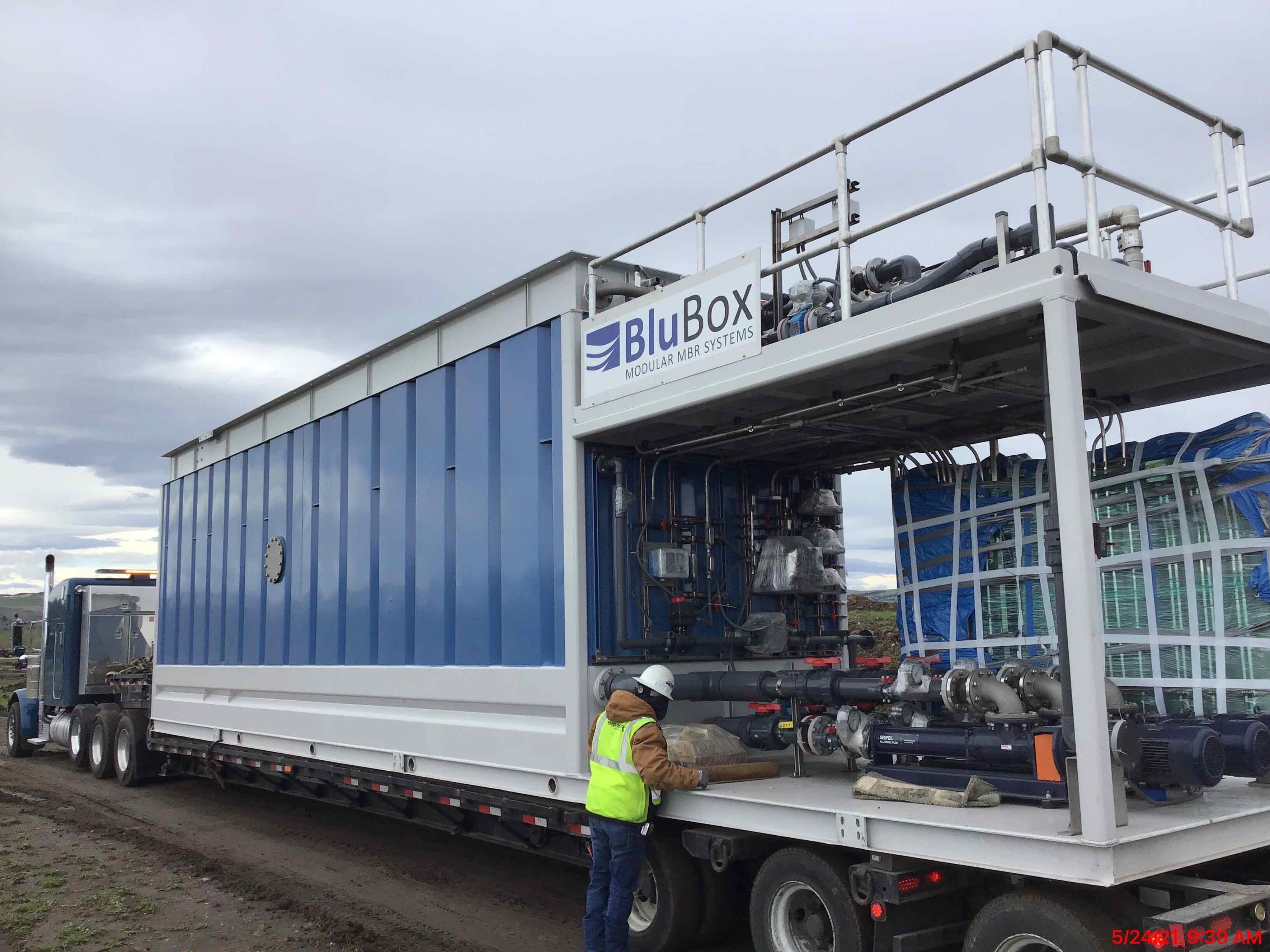How to Prepare for High Flow Rates in MBR Wastewater Systems

Membrane bioreactor (MBR) technology is an efficient vehicle for treating wastewater to high standards–enough to allow effluent to be reused for a number of purposes. MBRs can be integrated into many traditional wastewater treatment systems to reap the benefits of that operational efficiency–but external variables are still at play.
As storms encroach on weather forecasts, MBR plant operators must plan ahead for high flow rates.
This rapid influx of wastewater flow presents several challenges and potential repercussions for treatment systems, primarily due to hydraulic overload and reduced treatment efficacy. So, whether it’s a major storm or fast-paced snowmelt or a sudden industrial discharge in your service area, a methodical understanding of influent flow rate is key to staying ahead of influent.
Download our Free Checklist to Start Preparing Your MBR Systems for High Flow Rates
Complete this form to access our free checklist. Gain practical insights and actionable steps to optimize your MBR system for peak performance during high flow events. Download now and start preparing today!
Understanding the Impact of High Flow Rates
High flow rates can challenge traditional wastewater infrastructure and MBR systems in several ways. During storm events, inflow and infiltration can increase dramatically, leading to hydraulic overload–exceeding the maximum plant flow capacity of a given facility design.
This can cause higher suspended solids concentrations, turbulence that can damage membranes, and dilution of the biomass which can decrease process performance. Excessive flow can place undue stress on mechanical components like pumps and pipes, leading to potential failures and increased maintenance needs.
To that point, biological treatment processes rely heavily on the concentration of microbial biomass. When those populations are diluted, their ability to break down pollutants is undermined. This dilution, coupled with the reduced hydraulic retention time—the duration raw wastewater remains in the treatment process—diminishes the overall treatment efficiency, leading to subpar effluent quality.
High flow conditions often carry increased solids and debris, which can obstruct and damage critical components of the treatment system, such as filters and membranes. This not only affects the physical integrity of these components but also necessitates frequent maintenance and cleaning. Furthermore, the high velocity of water can cause erosion within the treatment infrastructure and contribute to sediment buildup, complicating operations and maintenance.
Operating under peak flow rate conditions requires dynamic adjustment of treatment protocols to manage the increased volume and variability of the incoming water. This demands vigilant monitoring and potentially complex operational changes, which can strain wastewater treatment facility staff and resources. Moreover, there is an elevated risk of overflows, which can lead to non-compliance with environmental regulations, such as the Clean Water Act, and result in significant fines.
To mitigate these issues, wastewater treatment plants often adopt strategies such as enhancing stormwater management capabilities, improving pretreatment to remove solids more effectively, and upgrading infrastructure to better handle higher flows.
Implementing real-time monitoring and adaptive control systems also plays a crucial role in optimizing the response to fluctuating conditions, ensuring the facility can continue to operate effectively despite the challenges posed by high flow rate events.
Technical Strategies for MBR Resilience
Your MBR design partner can plan ahead and build a degree of wastewater flow rate resilience into the system. For instance, implementing advanced flow regulation can significantly help in managing sudden spikes in water inflow. Devices like flow balancers and surge tanks play a crucial role by temporarily storing excess raw wastewater and releasing it gradually.
This controlled release helps maintain a steady average flow rate through the bioreactor, preventing hydraulic overload and promoting consistent treatment performance.
Similarly, modular and expandable membrane units within MBR systems will allow for quick adaptation to changes in wastewater flow volumes. This flexibility is useful during peak flow rate conditions, as the system can be scaled up to accommodate the increased water volume and scaled back down once normal plant flow conditions resume.
Enhancing pre-treatment processes such as screening and grit removal is also very important for the longevity and efficiency of MBRs. Effective pre-treatment helps reduce the burden on the MBR by removing solids that could potentially clog the membranes.
The first line of defense in pre-treatment is screening, which captures solids like rags, plastics, and other debris. Fine screens are particularly important in MBR systems because they trap smaller particles that could damage the membranes during storm events, when debris levels are typically higher.
Following screening, grit removal processes eliminate dense materials such as sand and gravel, which can accumulate and cause wear or blockages in the system. Removing grit protects the process tanks and membranes from damage. Another important pre-treatment process is the removal of fats, oils, and grease (FOG), which can lead to membrane fouling.
Systems equipped with grease traps or dissolved air flotation (DAF) units effectively remove these substances before they reach the biological processing stages, enhancing overall system efficiency.
Planning Ahead for Storm Events
Like so much else in wastewater treatment, proactive planning is key!
Integrate weather forecasting tools and early warning systems into your digital interface. These tools enable operators to predict high flow events and adjust operational parameters in advance. By anticipating changes in inflow, operators can better manage the system’s response to fluctuations, ensuring stability and continuous treatment efficiency.
Establishing specific emergency procedures tailored for high flow scenarios is vital for timely and effective response. Such protocols may include actions like increasing aeration in the aeration tank to maintain adequate dissolved oxygen levels, despite potential dilution effects caused by increased water volume.
Additionally, protocols might involve adjusting the return activated sludge (RAS) rates to effectively manage the biomass within the reactor, ensuring that microbial health and process efficiency are not compromised.
Making temporary operational adjustments can significantly enhance the resilience of MBR systems during peak flow events.
For instance, increasing the Mixed Liquor Suspended Solids (MLSS) concentration can help maintain effective treatment capacity even when the influent is diluted. Furthermore, optimizing aeration rates to match increased organic loads ensures that the system continues to perform optimally. These adjustments help in stabilizing the treatment process, ensuring that the treated wastewater (effluent) quality is maintained even under challenging conditions.
Conclusion
The resilience of MBR systems to high flow rates during storm events is not incidental but the result of meticulous planning and technical readiness. As climate patterns continue to evolve, the need for robust storm preparedness strategies becomes more pressing. Wastewater treatment professionals must take proactive steps to integrate storm resilience into their operational planning, ensuring that their facilities can handle the challenges of tomorrow, today.
By focusing on technical enhancements and strategic planning, MBR systems can be fortified against the severe impacts of high rainfall and wastewater flow rate conditions, ensuring continuous operation and compliance with environmental standards.
Want to learn more? Read some of our similar articles:
Sign up for the Integrated Water Services newsletter.
We share important perspectives and news on MBR wastewater treatment every two weeks.


